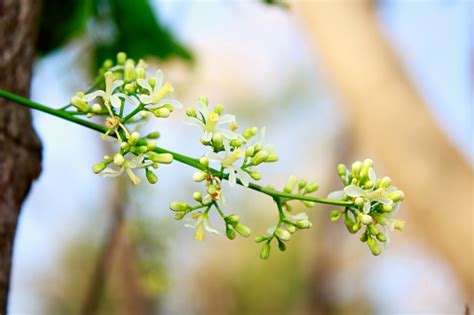Mwarubaini: The plant that can cure 40 diseases


Image credits: iStock
Neem, nimtree, Indian lilac. This traditional herb is known by many names. In Kenya, we call it mwarubaini. This name comes from the Kiswahili word arubaini, which translates to the number forty in English.
This medicinal plant was named mwarubaini because it was said to cure over 40 diseases. Its scientific name is Azadirachta indica, and it is a tree in the mahogany family. The mwarubaini tree is hardy; it can survive most environmental conditions except the biting winter, so Kenya’s tropical climate is perfect for it. Mwarubaini grows all over Kenya, but it earned a second local name, Mkilifi, because it grows in higher concentrations in Kilifi Town, by the Coast. It can grow as tall as 30 metres, and its evergreen leaves maintain their lush green colour all year round. Its flowers are white and fragrant, and its fruits are smooth, yellow-green and tiny; you could almost mistake one for an olive. Each part of this plant is used to heal in some way, even the roots!

Image credits: iStock
Mwarubaini has anti-fungal, anti-bacterial and anti-inflammatory properties, making it the ideal candidate to treat an array of illnesses. These range from respiratory and urologic diseases to skin conditions and dental diseases. Some of the big names on the list include malaria, typhoid, diabetes, the flu and acne, to name a few. It is even said that the herb can be used for birth control. Preparation of the medicine varies depending on its intended use. For example, when mwarubaini is used to treat an open wound, its leaves are crushed into a semi-solid paste and applied directly onto the patient’s skin. However, when treating a stomach ache, the bark, leaves and fruits are boiled in water, which is thereafter sieved and cooled for the patient to drink.

Image credits: iStock
Humans are not the only species to benefit from mwarubaini. This versatile plant is also used in veterinary practices to treat various diseases including mastitis and horn flies. Beyond medicine, mwarubaini is also used to heal the earth. The tree has anti-desertification properties, and wherever it is planted, it rejuvenates and maintains the fertility of the soil. On top of this, it is used as a natural pest repellent. Dried mwarubaini plants are placed around the farm and inside the household to protect crops, clothes and stored grains from harmful insects and pests. This practice is highly beneficial to the environment because mwarubaini does not harm bees and butterflies, which help in pollination.
Although this plant has many uses and benefits, we must warn you to be careful of your dosage. For adults, continuous long-term use of mwarubaini could harm the liver and kidneys and for young infants, even the smallest dose of neem oil could lead to death!
Have you ever used mwarubaini? What for? Let us know in the comments.




6 Comments
How do i differenciate an orginal mwarbaini from others?
just look up pictures of Neem tree or Mwarumbaini. I think most varieties are similar. If you are worried purchase it at a health food store as an herbal tea.
I have found that Mwarumbaini – (Neem oil) is quite effective at treating toe fungus, and very amazing when used to treat scars from post-operation on my leg. It also works quite well as an herbal tea. It’s bitter but I like what it does for my body as I believe it kills parasites.
I tolk one class full almost to kill me*3 for 3 days
How do we use Neem leaves for hair growth , let me testify
Uti